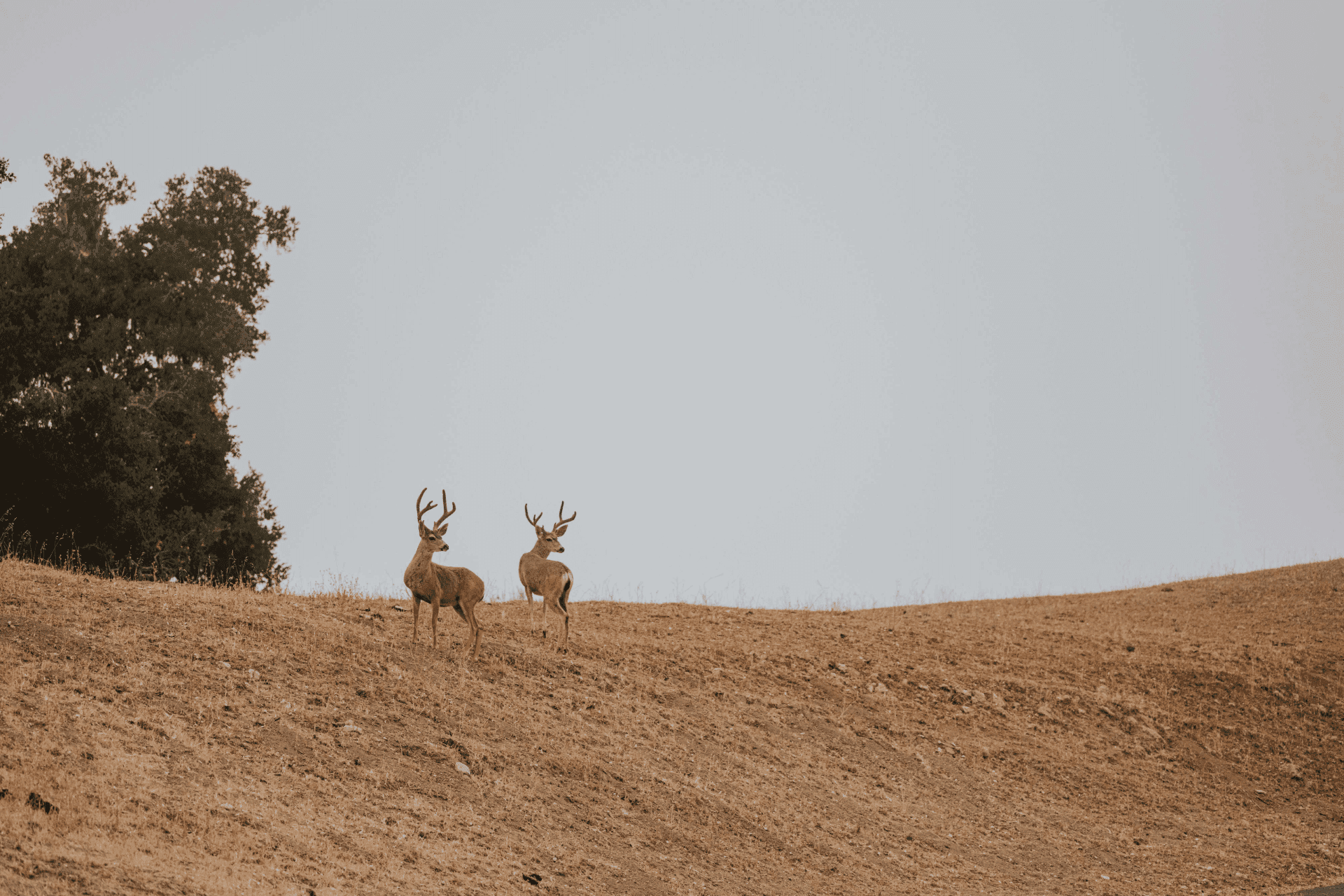The natural world around us
Wildlife at Alisal Ranch
The Natural World Around Us
Alisal Ranch is home to a diverse array of wildlife (and a great vacation spot for birdwatchers!). From deer and foxes, to bald eagles and wild turkeys, this land is a refuge for many species. Take a quiet moment at Alisal Lake and bask in the sights and sounds of egrets, herons, and other graceful birds. You may even spot a bobcat, coyote, or other wild animal in the distance during a trail ride adventure.
Most of the wildlife on the ranch can appear quite tame, but it is very important to not approach any of them.
Birds of Alisal Ranch
You will see a wonderful array of birds throughout the year at Alisal Ranch. Bird watchers and photographers of all skill levels especially enjoy this feature of our vast terrain.
Here is a comprehensive, but not exhaustive, list of the bird species you might see on your visit to Alisal Ranch:
- Bald eagle (more details below)
- Golden eagle
- Osprey
- California quail
- Kestrel
- Cormorant
- Bufflehead duck
- Mallard duck
- Mud hen
- Greater and Lesser snowy egret
- Kingfisher
- Great blue heron
- Yellow-billed magpie
- Swallow
- Acorn woodpecker
- Lewis’s woodpecker
- Tanager
- Oriole
- Barn owl
- Great horned owl
- Great-tailed grackle
- Red-tailed hawk
- Cooper’s hawk
- Black-shouldered kite
- Turkey
The Bald Eagles of Alisal Ranch
The bald eagles that currently reside at Alisal Ranch first arrived as a young pair in 2009, from nearby Lake Cachuma. The female has a wingspan of eight feet, and the male has a wingspan of six-and-a-half feet (males of the species are typically smaller than the females).
The bald eagle builds the largest nest of any North American bird. The nest of Alisal Ranch’s duo is about four feet deep and six feet wide and uses up to about 400 sticks and twigs. Their original nest partially fell down in August of 2015, and remnants of it can be seen on a branch just below the current nest on the south side of the lake. The underside of the nest is home to a family of swallows. The swallows eat all of the debris left over in the nest and keep it clear of parasites and larvae, which ensures good health of eaglet chicks.
Bald eagles mate for life, and this pair has had an eaglet or two every year since they have been at Alisal Ranch (with the exception of 2015). Fledglings stay on the ranch territory until they are three years old, during which time they will grow their white plumage (they are born all black). The eaglets eat small mammals, fish, and some carrion. And, after the three years, they most likely migrate to the channel islands or Lake Cachuma to find a mate and build a nest.The eagles are protected under the Bald and Golden Eagle Protection Act.
Black Bears
Black bears are a medium-sized, omnivorous species that lives on the back side of Alisal Lake, on the edge of the Los Padres National Forest. They are strong swimmers who eat mostly fish, berries, roots, and moss. They are crepuscular, which means they are most active at dawn and dusk, and they hibernate from October/November to March/April. Adult males weigh between 130-660 lbs, and adult females weigh between 90-180 lbs. They have an 18-year life span.
Bobcats
There is a healthy population of bobcats at Alisal Ranch. Like bears, they are crepuscular, most active in twilight. Currently, a large female is living in the culvert by our solar gate, and she produces cubs every year.
Mountain Lions
Mountain lions have been spotted all over Alisal Ranch, with tracks most often seen near the lake, Deer Canyon, and on the west side of the ranch. A mother and cubs have also been sighted at the horse pasture and permanent pasture. The territory range of a Mountain Lion is 12 to 20 square miles.
We most likely have two or three mountain lions currently residing on the property. They do not bother the horses or cattle but will hunt the deer and turkeys.
Black-Tailed Deer
We have many black-tailed deer at Alisal Ranch. Males of the species live up to eight years, and females can live to 16. Their main predators are Coyotes, Bobcats, and Mountain Lions. The rut (mating season) starts late-September/October, with fawns arriving in the springtime. Our deer seem very tame because they have been born on the ranch.
Coyotes
Large packs of coyotes live at Alisal Ranch. Their calls (primarily heard at nighttime) can sound like laughing, yipping, howling, and barking. Such calls are meant to disorient prey and conduct “roll call” for large packs. Coyotes will hunt just about anything in their size range.
They can be seen at all times of the day on the ranch and are active both day and night. If seen during the day, the coyotes are not sick and don’t have rabies. The coyotes on our property are very comfortable with the sights of horses and riders going by; they do not bother the horses.
A Descrptive Nature Guide
Alisal Ranch Field Guide
The spirit of adventure.
At Alisal Ranch, we start each day with an unrelenting curiosity—and we invite you to do the same. There’s no better place to connect with the passionate, pioneering spirit, or to spend meaningful moments with friends and family. Take the road less traveled, breathe a little deeper, feel the power of nature, and dream under the stars.

